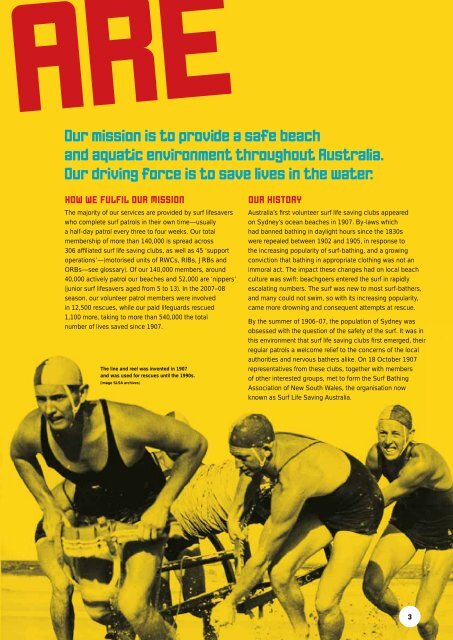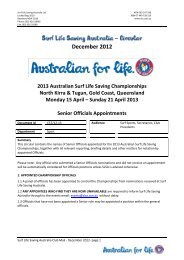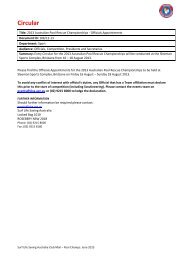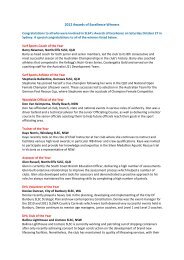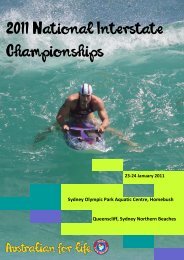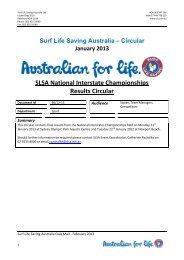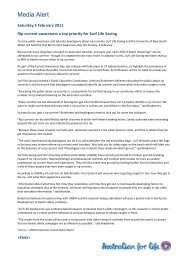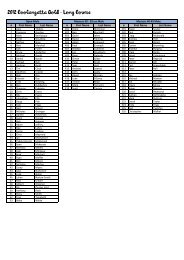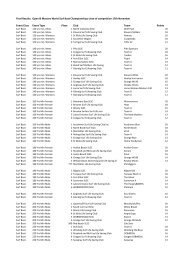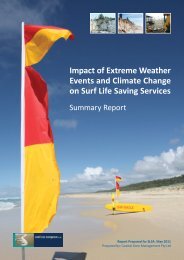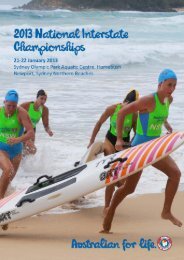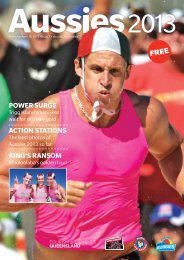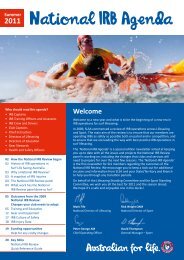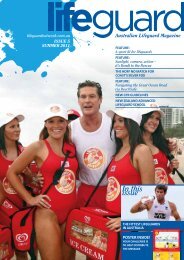SURF LIFE SAVING AUSTRALIA ANNUAL REPORT 2007–08
SURF LIFE SAVING AUSTRALIA ANNUAL REPORT 2007–08
SURF LIFE SAVING AUSTRALIA ANNUAL REPORT 2007–08
- TAGS
- surf
- australia
- annual
- sls.com.au
Create successful ePaper yourself
Turn your PDF publications into a flip-book with our unique Google optimized e-Paper software.
ARE<br />
Our mission is to provide a safe beach<br />
and aquatic environment throughout Australia.<br />
Our driving force is to save lives in the water.<br />
HOW WE FULFIL OUR MISSION<br />
The majority of our services are provided by surf lifesavers<br />
who complete surf patrols in their own time—usually<br />
a half-day patrol every three to four weeks. Our total<br />
membership of more than 140,000 is spread across<br />
306 affi liated surf life saving clubs, as well as 45 ‘support<br />
operations’—(motorised units of RWCs, RIBs, JRBs and<br />
ORBs—see glossary). Of our 140,000 members, around<br />
40,000 actively patrol our beaches and 52,000 are ‘nippers’<br />
(junior surf lifesavers aged from 5 to 13). In the <strong>2007–08</strong><br />
season, our volunteer patrol members were involved<br />
in 12,500 rescues, while our paid lifeguards rescued<br />
1,100 more, taking to more than 540,000 the total<br />
number of lives saved since 1907.<br />
The line and reel was invented in 1907<br />
and was used for rescues until the 1990s.<br />
(Image SLSA archives)<br />
OUR HISTORY<br />
Australia’s fi rst volunteer surf life saving clubs appeared<br />
on Sydney’s ocean beaches in 1907. By-laws which<br />
had banned bathing in daylight hours since the 1830s<br />
were repealed between 1902 and 1905, in response to<br />
the increasing popularity of surf-bathing, and a growing<br />
conviction that bathing in appropriate clothing was not an<br />
immoral act. The impact these changes had on local beach<br />
culture was swift: beachgoers entered the surf in rapidly<br />
escalating numbers. The surf was new to most surf-bathers,<br />
and many could not swim, so with its increasing popularity,<br />
came more drowning and consequent attempts at rescue.<br />
By the summer of 1906–07, the population of Sydney was<br />
obsessed with the question of the safety of the surf. It was in<br />
this environment that surf life saving clubs fi rst emerged, their<br />
regular patrols a welcome relief to the concerns of the local<br />
authorities and nervous bathers alike. On 18 October 1907<br />
representatives from these clubs, together with members<br />
of other interested groups, met to form the Surf Bathing<br />
Association of New South Wales, the organisation now<br />
known as Surf Life Saving Australia.<br />
3


